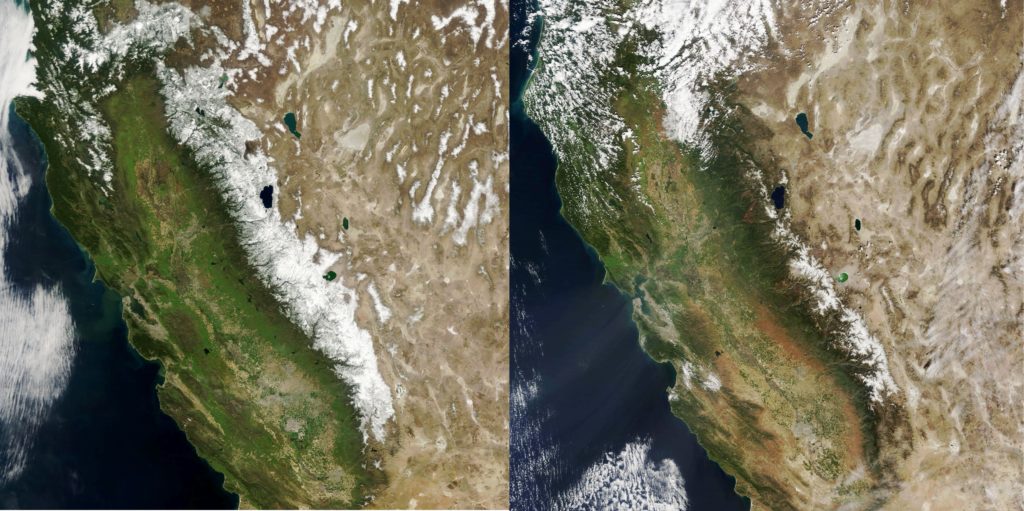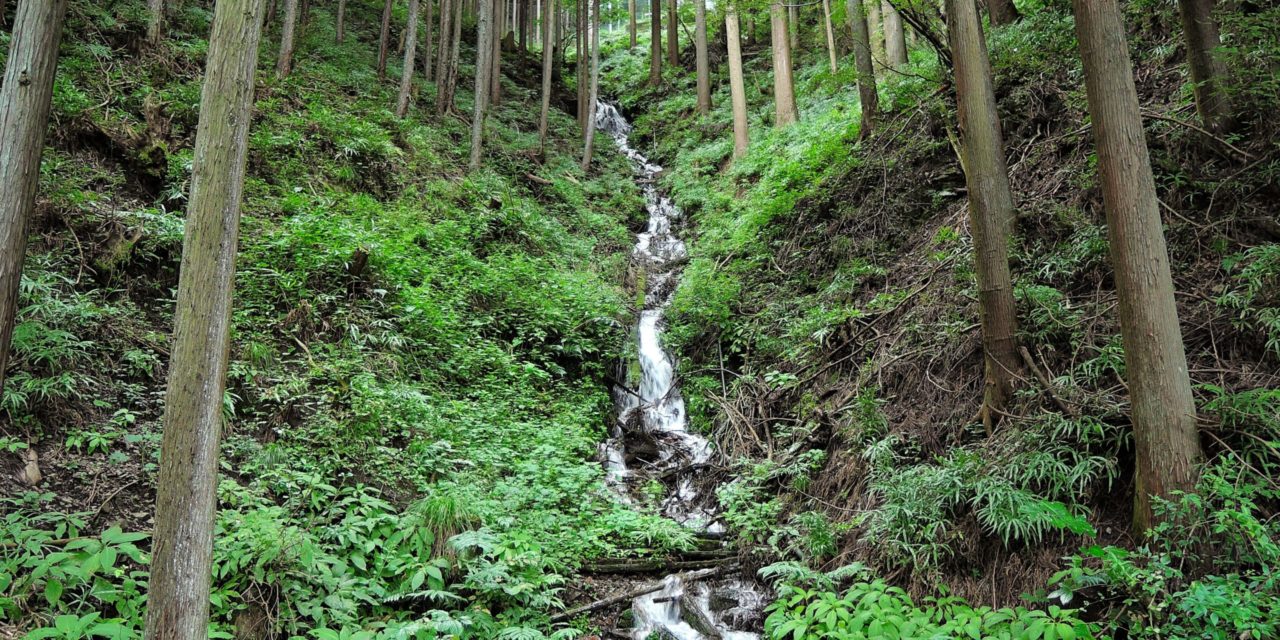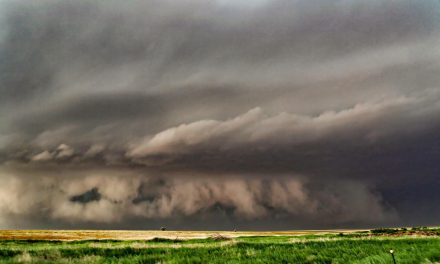California’s Central Valley generates an estimated $17 billion in crop sales each year while occupying less than 1% of farmland in the U.S., according to the U.S. Geological Survey (USGS). In many southern stretches of the Central Valley, as much as 50% of water currently used for agricultural irrigation originates from the Sierra Nevada mountains, where in early spring of each year, accumulated snow in the peaks begins to melt and flow into the lowlands.
However, as global temperatures warm, meltwater is growing less predictable. Research demonstrates, for example, that early April Sierra Nevada runoff volumes have decreased by as much as 20% since the 1960s, a disparity projected to rise significantly in coming decades. Either by causing more winter precipitation to fall as rain than as snow or by causing snowpack to melt earlier, climate change directly affects streamflow and water supplies in lowland communities.
The Central Valley is one of many mountain-dependent world regions expected to face heightened water stresses as climate change disrupts usual snowpack and meltwater patterns. According to a new study published in July by a team of researchers in four European countries, as many as 1.5 billion people will depend on contributions from mountain meltwater in order to meet their water demands by 2050.
Higher Temperatures Above Disrupt Water Below
About 39% of global landmass consists of lowlands, defined as areas 200 m (660 ft) or less above sea level. Many lowland regions rely on rivers for potable and non-potable water, which in turn often depend on seasonal meltwater runoff from nearby mountains to maintain sufficient streamflow. The July study compares historical meltwater runoff data with water consumption trends to predict specific lowland regions likely to become most sensitive to meltwater runoff changes in the coming decades.
The study is the first to estimate future dependence on mountain meltwater at the global scale, University of Zurich (Switzerland) geologist and first author Daniel Viviroli described in a release.
“Until now, research has focused mainly on river basins that originate in High Mountain Asia,” Viviroli said. “But in many other regions, irrigated agriculture is heavily dependent on water from mountainous areas, such as in the Middle East and North Africa, as well as parts of North America, South America, and Australia.”
Using a high-resolution computer model, the study team operationalized data from a variety of sources including the USGS, the Netherlands Environmental Assessment Agency, the United Nations Food and Agriculture Organization, and other internationally recognized research groups. After splitting every lowland river catchment of at least 10,000 km2 (3,900 mi2) into individually processed cells on a grid, the researchers first estimated local water availability and water consumption in 2050. The analysis relied on existing topographical information and water-use efficiency data alongside moderate-level, international-standard population growth estimates.
Finally, the study identified low-lying river systems with streamflow rates most dependent on seasonal meltwater to determine which areas would be most likely to experience water deficits if current contributions from meltwater shrink.
Major areas expected to depend most on mountain meltwater in 2050, according to the researchers, include:
- the Ganges, Brahmaputra, and Meghna River catchment areas in India and Bangladesh;
- the Yangtze and Indus River catchment areas in China and Pakistan;
- the Euphrates and Tigris River catchment areas in the Middle East; and
- the Colorado River catchment area in the western U.S.
Protecting the World’s Water Towers
The study stresses the importance of sustainable development in these and other susceptible lowland regions. In these areas, where melting mountain snowpack acts as a natural “water tower,” the authors recommend taking measures to prevent agricultural overuse and utilizing low-impact approaches to urban development such as green infrastructure.

While traditional water supply measures, such as dams, canals, and aqueducts might be worthwhile adaptations in these regions, Viviroli noted that these measures typically come with large ecological and spatial footprints that might be infeasible in several densely developed watersheds such as the Indus.
“Ensuring the function of mountains as ‘water towers’ should be a major concern of the world’s lowland populations,” Viviroli said.







